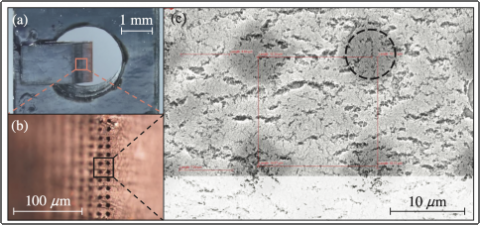H. Rinderknecht, T. Wang, A. Garcia, G. Bruhaug, M. Wei, H. Quevedo, T. Ditmire, J. Williams, A. Haid, D. Doria, K. Spohr, T. Toncian, and A. Arefiev, "Relativistically transparent magnetic filaments: scaling laws, initial results and prospects for strong-field QED studies", New J. Phys. 23, 095009 (2021).
Relativistic transparency enables volumetric laser interaction with overdense plasmas and direct laser acceleration of electrons to relativistic velocities. The dense electron current generates a magnetic filament with field strength of the order of the laser amplitude (>105 T). The magnetic filament traps the electrons radially, enabling efficient acceleration and conversion of laser energy into MeV photons by electron oscillations in the filament. The use of microstructured targets stabilizes the hosing instabilities associated with relativistically transparent interactions, resulting in robust and repeatable production of this phenomenon. Analytical scaling laws are derived to describe the radiated photon spectrum and energy from the magnetic filament phenomenon in terms of the laser intensity, focal radius, pulse duration, and the plasma density. These scaling laws are compared to 3-D particle-in-cell (PIC) simulations, demonstrating agreement over two regimes of focal radius. Preliminary experiments to study this phenomenon at moderate intensity (a0 ~ 30) were performed on the Texas Petawatt Laser. Experimental signatures of the magnetic filament phenomenon are observed in the electron and photon spectra recorded in a subset of these experiments that is consistent with the experimental design, analytical scaling and 3-D PIC simulations. Implications for future experimental campaigns are discussed.
